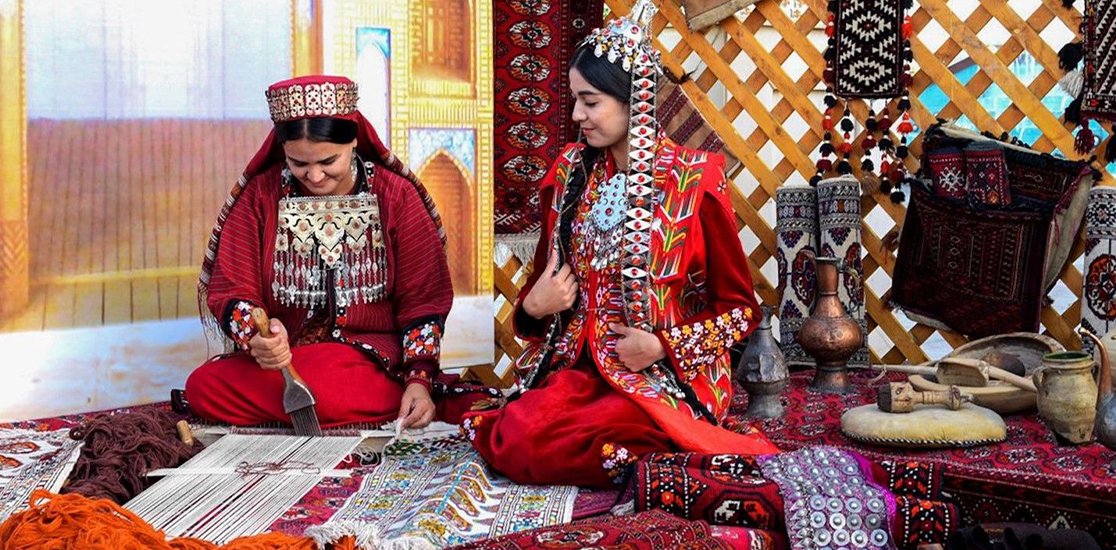
The uniqueness of Turkmen embroidery lies in the harmonious blend of patterns and colors, creating a diverse array of themes that reflect the inner world of the craftswomen.
The wedding attire of a Turkmen bride is truly one-of-a-kind. While simple and modest in its cut, it is always richly adorned with embroidery, which serves as a talisman to ward off the evil eye. Turkmen embroidery is an essential part of the nation’s cultural heritage, a value that continues to be cherished and celebrated today.
As it was with their ancestors, mothers taught their daughters, ensuring the survival of this ancient art form. Techniques and patterns preserved for hundreds of years are passed down through generations. A woman's wedding day is one of the most significant events in her life, symbolizing the start of a new chapter and a new family. The attire of a Turkmen bride captures the sanctity of this moment. According to tradition, girls began working on their wedding dresses from an early age, using this creation to express their individuality and hopes for the future. Young women also embroidered head coverings, striving to showcase their best work as a testament to their skill and dedication.
Today, brides continue to honor their ancestors by wearing traditional Turkmen attire, though few begin crafting their dresses from childhood. Dresses can now be purchased, rented, or custom-made by skilled seamstresses. Despite this, the magic of wearing a beautifully embroidered gown remains undiminished, and brides delight in donning them. These traditional costumes bridge generational gaps as mothers and grandmothers recount stories of their own weddings.
The dress and headdress of a Turkmen bride are crafted from "Keteni," a traditional silk fabric, typically red and richly decorated with embroidery. The dress itself is often concealed by the "kurte," a cape worn over it. The kurte is lavishly embellished with embroidered patterns symbolizing beauty, abundance, and fertility, making it an integral part of the wedding ensemble. The intricate embroidery on these dresses rivals the creativity of ancient folklore while still reflecting its timeless motifs. Although embroidery patterns are continually enriched with new elements, the traditional foundation of balance, composition, and color harmony endures.
In the past, the kurte followed a more subdued style, featuring several embroidered roundels in the center and a thin fringe along the edges. Today, women prefer more elaborate and colorful embroidery, sometimes covering the entire kurte. Craftswomen remain deeply attached to ancient patterns cherished by their people, yet embroidery is a living art form—a mirror of life. Thus, designs often blend the ancient with the modern, showcasing vibrant colors and intricate details.
Craftswomen take immense pride in creating wedding dresses, carefully selecting colors and patterns that reflect both the bride’s personality and the rich heritage of this art form.
Across Turkmenistan, remarkable craftswomen preserve this tradition, often uniting in creative groups to share skills, expertise, and products. Their mastery allows for the creation of authentic, beautiful, and modern pieces, ensuring the continuation of this cherished folk tradition.